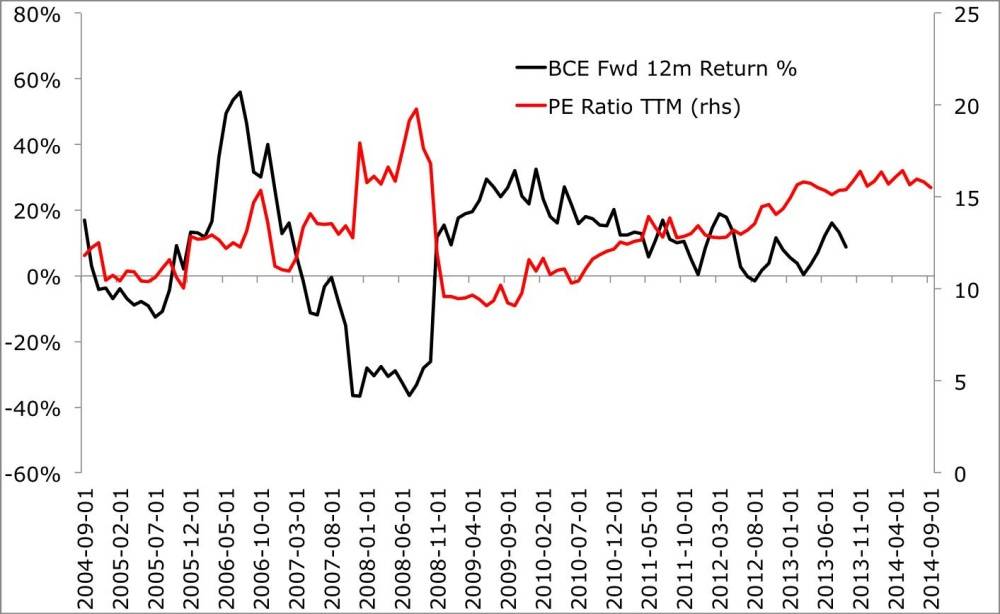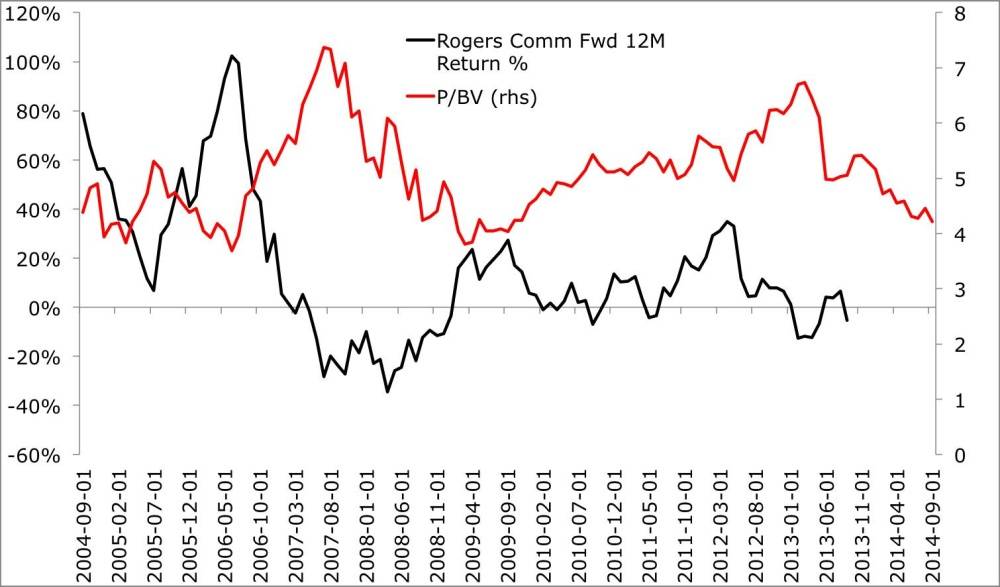A disturbingly weak set of earnings results from giant U.S. telecommunications giant AT&T Inc. and a drop in profits at Rogers Communications Inc. reported Thursday provide a good catalyst for a close look at Canada's two largest telcos, BCE Inc. and Rogers Communications Inc. In the end, Roger's stock looks more promising than BCE but the full story is far more interesting than that.
BCE and Rogers look like similar companies on the surface but their stocks have traded off of different valuation multiples. For BCE, price to earnings has been the best predictor of stock performance while for Rogers, price to book value has been the best indicator of future stock performance. (BCE owns 15 per cent of The Globe and Mail.)
The two accompanying charts, which compare the relevant valuation metric with future 12-month performance for each stock, show how this has worked over the past decade. For BCE, investor returns improved as the P/E ratio declined and Rogers' stock performance climbed as price to book ratios fell. In both cases, future performance fell as valuation levels rose.
I can't remember a case where two competitors from the same industry had stocks with different valuation metrics that predicted returns, but that seems to be the case here.
Based on this analysis, and despite the most recent quarterly profits report, Rogers stock looks like the more promising investment by a significant margin. It is not a surprise that Canaccord Genuity analyst Dvai Ghose raised his rating on the stock from "hold" to "buy" this week, with the belief that the stock is oversold.
BCE is currently trading with a price-earnings ratio of 15.5 times, which is 18.3 per cent higher than the 10-year average of 13.1. For Rogers the price to book value is 4.2 times, which is 17 per cent more attractive than the 10-year average of 5.1 times.
As AT&T's results indicate, the business environment for major telecom companies is getting more difficult. Huge investments are necessary to maintain network functioning while revenue growth stalls because of, among other factors, smartphone market saturation.
Valuation levels become more important as industry profit growth slows. Valuation discounts provide a margin of safety that protects investor capital in tougher conditions. And in the Canadian telecom sector, investors need to be using the right valuation tool for the right company.
Follow Scott Barlow on Twitter @SBarlow_ROB.

